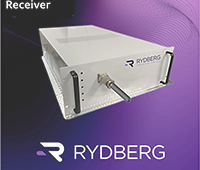The molecular alignments of the conductive ink in printed electronics play a significant role in the devices’ performance. Image: Peter Allen |
By employing powerful X-rays that can see down to the
molecular level of organic materials used in printable electronics, researchers
are now able to determine why some materials perform better than others. Their
findings, published in Nature Materials,
could lead to cheaper, more efficient printable electronic devices.
“This work is exciting because it helps reveal in new
detail how we can achieve high performance transistors and solar cells with
polymers,” said University of California, Santa Barbara (UCSB) professor
of materials Michael Chabinyc, who, with UCSB chemistry graduate student Justin
Cochran and North Carolina State physicists Harald Ade and Brian Collins, set
out to find out which materials and which processing steps worked better, in
what is still a largely trial-and-error process for manufacturers of printable
electronics. This effort also involved collaboration with an international
team, including researchers from Monash
University in Australia and Univeristät Erlangen-Nümberg in Germany.
Printed electronics is a process that employs fairly common
printing methods to deposit inks containing organic conductive molecules onto
surfaces, to creating circuitry for a variety of electronic devices, including
photovoltaics, displays, and even luminescent clothing. The process is faster
and cheaper than conventional production techniques for the same products, and
could pave the way toward making these devices more accessible to consumers.
However, until recently, the process of selecting these organic
materials––and what steps to take in order to improve their performance––was
something of a mystery. Some materials and treatments worked better than
others, and the researchers set out to find out why.
The researchers developed a technique that used powerful
X-rays to peer into these organic materials at the molecular level. They found
that the performance of the material had to do with its molecular alignment,
and that this alignment was controlled by simple methods such as heating and
molecular interactions at surface levels.
“In transistors, we found that as the alignment between
molecules increased, so did the performance,” Collins said. “In the
case of the solar cells, we discovered alignment of molecules at interfaces in
the device, which may be the key to more efficient harvesting of light. For
both, this was the first time anyone had been able to really look at what was
happening at the molecular level.”
The researchers hope that the new X-ray technique will
provide a better perspective into the nature of organic materials used in
printed electronics.
“We’re hoping that this technique will give researchers
and manufacturers greater insight into the fundamentals of these
materials,” Collins said. “Understanding how these materials work can
only lead to improved performance and better commercial viability.”





